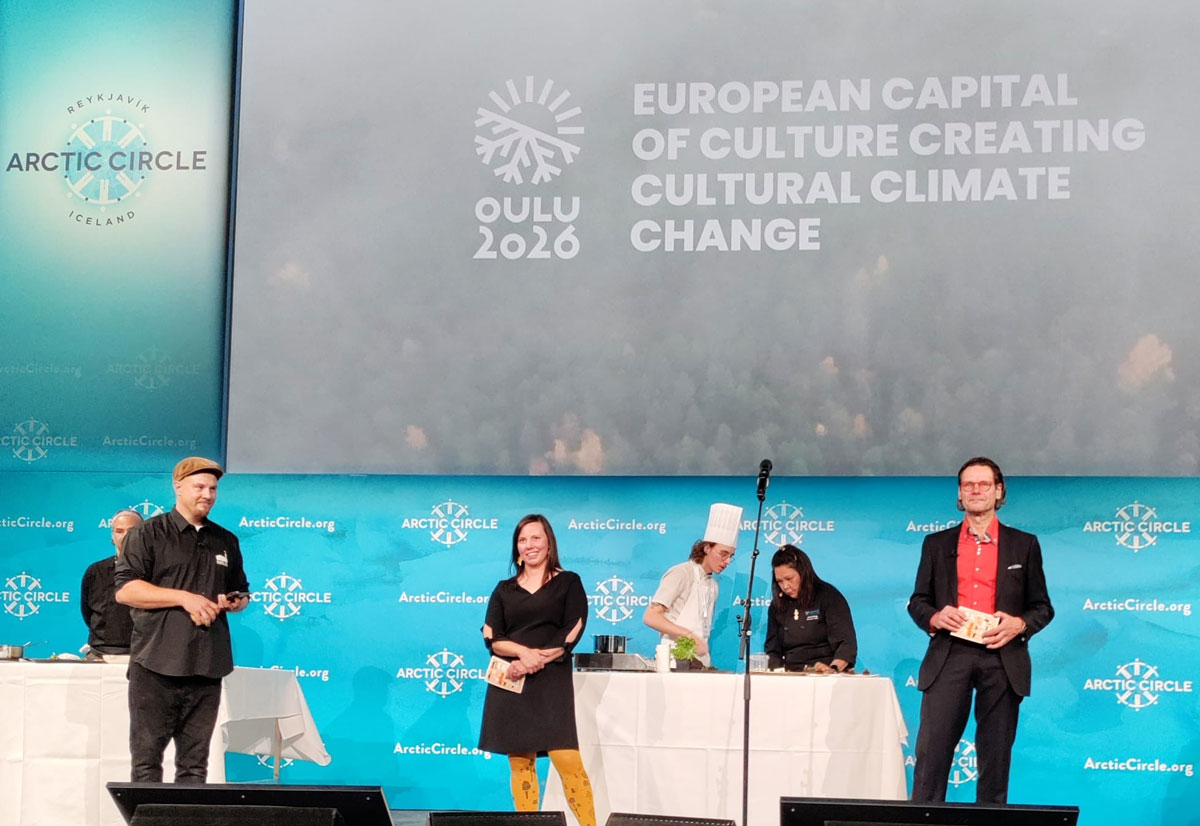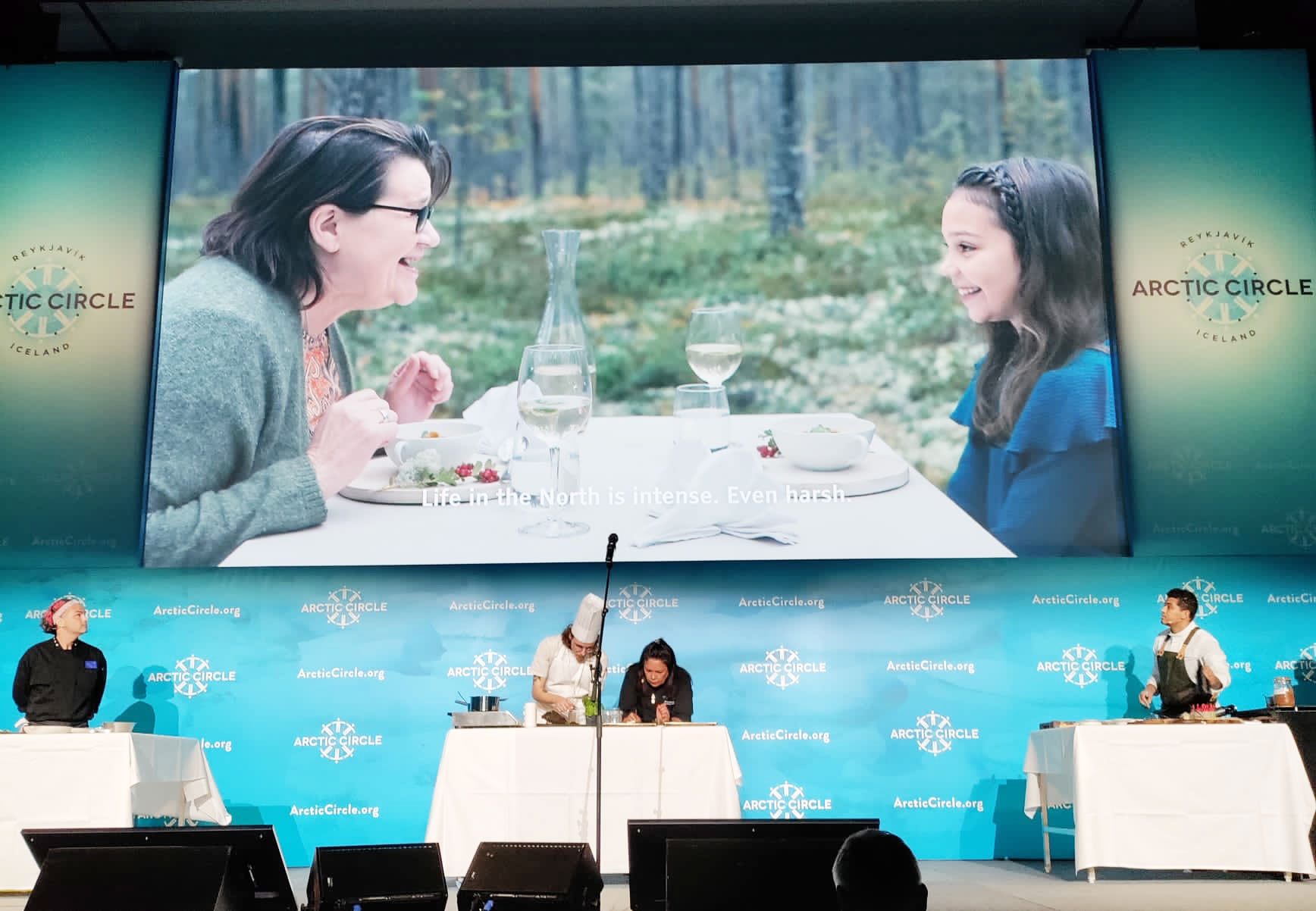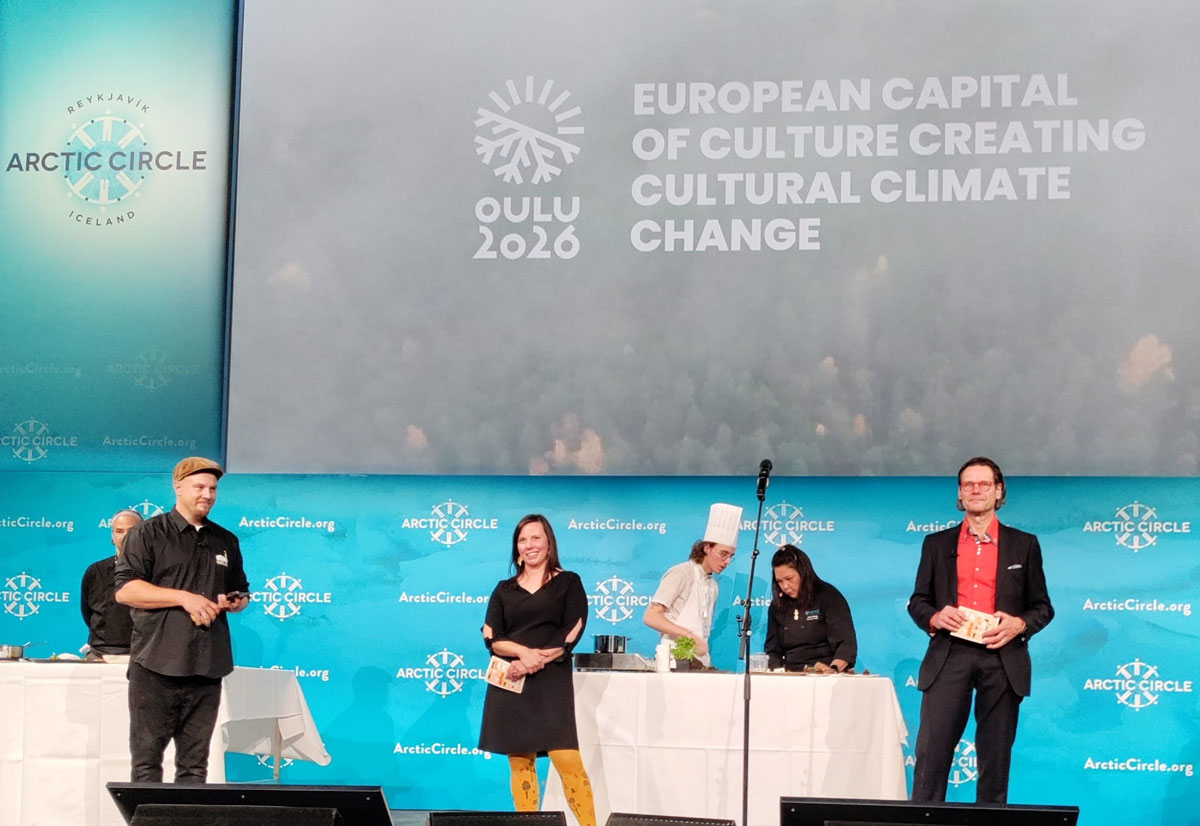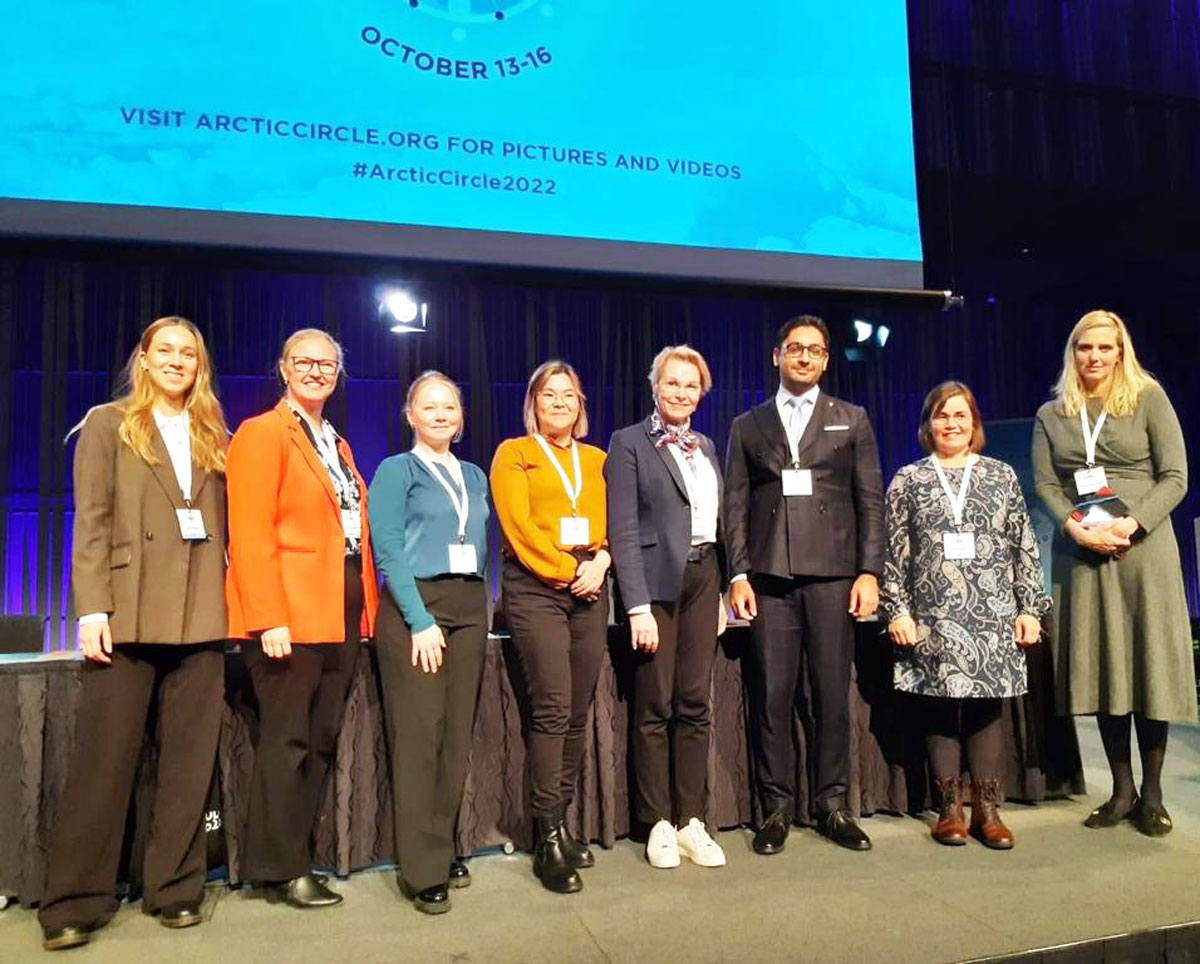My Oulu: How does Oulu taste like – Arctic Food Lab takes local flavors to the world

Arctic Food Lab brings together those operating in gastronomy and food culture in the Oulu region and celebrates Northern cuisine and gastronomy. Arctic Food Lab got a unique opportunity a couple of weeks ago at the Arctic Circle -event in Reykjavík, as food products from Oulu region got invited to the world’s biggest annual international assembly on the Arctic. The opportunity to get on stage in front of audience of 2,000 people attending Arctic Circle was so delicious that it had to be grasped quickly.
”In June, I met Mads Qvist Fredereksen, managing director of the Arctic Economy Council, who was visiting Oulu and was preparing the program for the Arctic Circle event. One of the themes of the event was focusing on arctic food and he asked us to join the event”, explains Niina Keränen, the project manager of Arctic Food Lab.
Keränen called to the companies and partners involved already in the Arctic Food Lab and offered the opportunity to take part of event.
”There is an oversupply of fish products, a lot of them come from other Arctic regions. Our unique thing is the berries and the mushrooms. We really stood out with our products in the event. Chefs were using our products and developing tasting dishes from them – and people really loved them”, Keränen says.
But to succeed, the delicious taste of the product is not enough. One need a strong story behind the product as well – to get people interested and to have a taste of the flavors too. Luckily Keränen had a good stories to share on stage, with Lasse Lyijynen, “potato Lasse”, from Tyrnävän Kehitys Ltd and Lasse Eloranta, “Cheese-Lasse”, from Kiurun Juustola, both part of Arctic Food Lab.
”We got the chance to present ourselves on the main stage of the Arctic Circle, which was a wonderful, yet exciting, opportunity. I presented the Arctic Food Lab as a part of Oulu2026 European Culture Capital program. Lasse Lyijynen told of course about potatoes – the Tyrnävä high-grade area and the air potato and Lasse Eloranta presented their unique cheese. “Potato Lasse”, of course, had a potato with him on stage –and the potato flew through the air to Cheese-Lasse when it was his turn on stage. The stage choreography was successful, as there was a lot of buzz at our stand and we received a lot of positive feedback on our performance – and especially on our products,” Keränen rejoices.

In addition to Kiurun Juustola, the Arctic Food Lab was accompanied in Reykjavík with Syötteen Sieni ja Yrtti, Luonnon aromit, Puhoksen Kala, Marjarannikon berry juices from Liminka, Mäläskä potato farm from Tyrnävä, Yrttiaitta from Ii and Kujala farm from Hailuoto.
Share what you know
Arctic nature provides a lot of wonderful natural and pure ingredients around the region, but the product development is still underdeveloped – at least according to Keränen’s observation at the Arctic Circle.
”The development of Arctic gastronomy requires sharing of know-how and cooperation! For example, for crisps made from fish skin, Kujala farm’s garlic sauces are perfect for dipping on the side. Yrttiaitta’s wild salt, which contains nettle amazed people in Reykjavík. Nettles grow all over the Arctic, but we have managed to process it into finished products”, Keränen says.
Food sovereignty was also a hot topic at the Arctic Circle event. Student and Arctic Food Lab -trainee Laura Suorsa got to participate Arctic Policy Hackathon about food sovereignty in the Arctic -session hosted by the Arctic Mayors Forum in collaboration with The Gordon Foundation and The Canadian International Arctic Centre.
“In hackathon we had 14 young people from different countries around the Arctic and our aim was to discuss and give policy recommendations from the youth perspective about food sovereignty”, Suorsa explains.
Policy recommendations from the hackathon were under four different headlines: Use what you have, Take only what you need, Share what you have and Share what you know.
“Overall, the outcome of the hackathon was, that Arctic peoples should maintain their easy access to local and traditional foods and to be able to hunt, trap, fish, harvest and herd as it improves their quality of life and physical and mental well-being”, Suorsa continues.
Join the Arctic Food Lab

The Arctic Food Lab trademark, launched at the beginning of the year, has already been adopted by more than 40 companies and 170 food products from North Ostrobothnia. Companies don’t have to wait for the year of the Capital of Culture, instead they can join the program right away.
”Using local ingredients is enough to get the Arctic Food Lab trademark. Product or dish has to be made in the Oulu2026 region, for example groceries, restaurant’s dish or signature menu. The trademark is free of charge, the company has to sign a license agreement with the Oulu2026 cultural foundation and thus receives the brand for its use. The company receives graphic instructions on how to use the brand and, of course, everyone is required to be ready to speak for the brand” Keränen says.
Restaurants, cafés or destination management companies working with tourism also have access to the trademark.
”The entire menu could be under the Arctic Food Lab brand in many restaurants in Oulu, but certain dishes have been selected from the menu. This way the trademark helps, for example, the international tourists to choose the dishes and local flavours” Keränen says.
More about Arctic Food Lab from this link.
